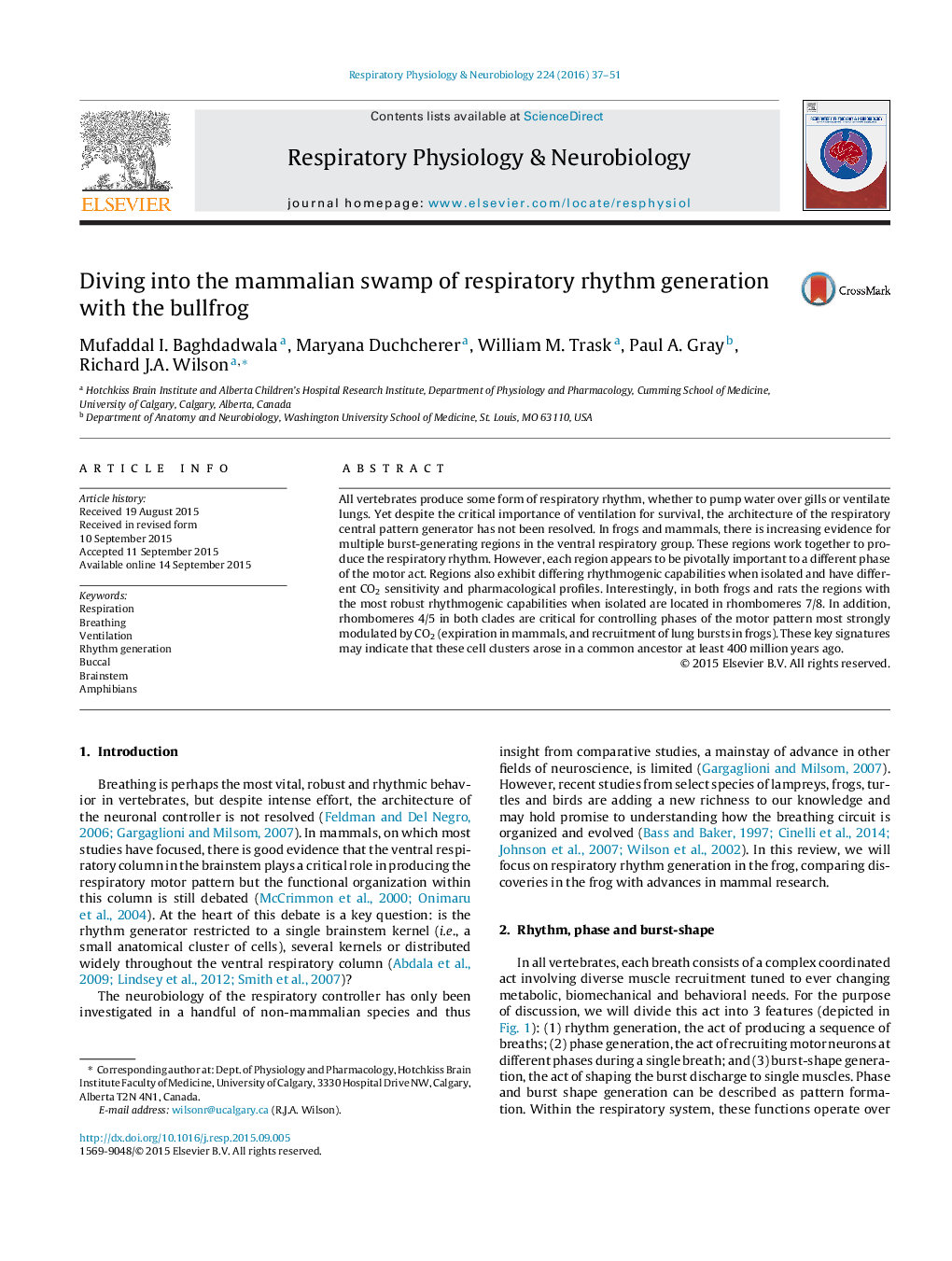| کد مقاله | کد نشریه | سال انتشار | مقاله انگلیسی | نسخه تمام متن |
|---|---|---|---|---|
| 2846769 | 1571306 | 2016 | 15 صفحه PDF | دانلود رایگان |
• Ventilatory motor pattern of bullfrog generated by at least 3 burst generators.
• Burst generators differ in their endogenous rhythmicity and anatomic extent.
• This architecture is compared to respiratory circuits described in other vertebrates.
All vertebrates produce some form of respiratory rhythm, whether to pump water over gills or ventilate lungs. Yet despite the critical importance of ventilation for survival, the architecture of the respiratory central pattern generator has not been resolved. In frogs and mammals, there is increasing evidence for multiple burst-generating regions in the ventral respiratory group. These regions work together to produce the respiratory rhythm. However, each region appears to be pivotally important to a different phase of the motor act. Regions also exhibit differing rhythmogenic capabilities when isolated and have different CO2 sensitivity and pharmacological profiles. Interestingly, in both frogs and rats the regions with the most robust rhythmogenic capabilities when isolated are located in rhombomeres 7/8. In addition, rhombomeres 4/5 in both clades are critical for controlling phases of the motor pattern most strongly modulated by CO2 (expiration in mammals, and recruitment of lung bursts in frogs). These key signatures may indicate that these cell clusters arose in a common ancestor at least 400 million years ago.
Journal: Respiratory Physiology & Neurobiology - Volume 224, April 2016, Pages 37–51
